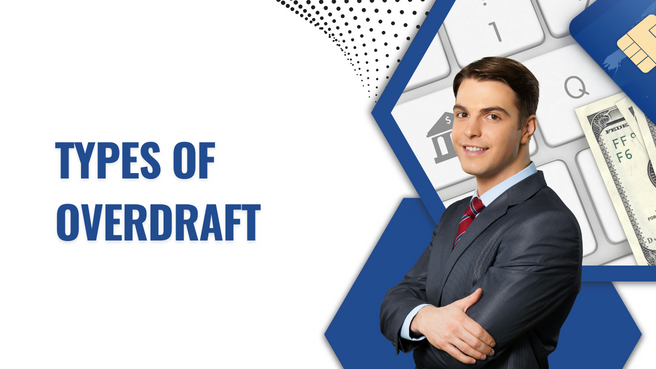
Types of Overdraft: Navigating Financial Flexibility
In the world of finance, an overdraft is a handy tool that can provide you with extra funds when your account balance drops below zero. It’s like having a financial safety net that catches you when you’re about to hit the ground. But did you know there are different types of overdrafts? Understanding these can help you manage your finances more effectively and avoid unnecessary fees. Let’s dive into the most common types of overdrafts and how they work, including a special mention of the Dropline Overdraft.
Authorized vs. Unauthorized Overdrafts
The first distinction to make is between authorized and unauthorized overdrafts. An authorized overdraft is one that you’ve agreed upon with your bank beforehand. You’ll know the limit, the interest rate, and any fees associated with going into overdraft. This type is beneficial because it usually comes with lower charges than its unauthorized counterpart.
On the other hand, an unauthorized overdraft happens when you spend more money than you have in your account without prior arrangement with your bank. This can lead to significantly higher fees and interest rates. It’s a situation best avoided through careful account management.
Secured vs. Unsecured Overdrafts
Another important distinction is between secured and unsecured overdrafts. A secured overdraft is backed by an asset, such as your home or car. This can result in lower interest rates because the bank has a form of collateral. However, it also means that you risk losing that asset if you can’t pay back the overdraft.
Unsecured overdrafts, meanwhile, do not require any collateral. They are typically offered based on your creditworthiness and banking history. While more convenient, they often come with higher interest rates due to the increased risk for the lender.
Dropline Overdraft: A Unique Solution
A unique type of overdraft is the Dropline Overdraft. This facility combines the features of a term loan and an overdraft. The limit available decreases (drops) over time, according to a predetermined schedule. It’s designed to meet the short-term financing needs of businesses, offering them flexibility and the ability to manage cash flow effectively. For instance, a business could use a Dropline Overdraft to cover operational costs while waiting for payments from clients.
Real-Life Statistics and Data
Overdrafts are widely used across the globe. In the United States, for instance, more than 30% of checking accounts experience at least one overdraft per year. However, the costs can be steep. According to the Consumer Financial Protection Bureau, banks earned over $15 billion in 2019 from overdraft and non-sufficient funds fees.
Understanding the different types of overdrafts can help you make informed decisions about managing your finances. Whether you’re considering an authorized overdraft for personal use or a Dropline Overdraft for your business, knowing the terms, conditions, and costs involved is crucial. Always communicate with your bank to find the best solution for your financial needs and to ensure you’re not caught off guard by high fees or interest rates.
Leveraging Overdrafts Wisely: Insights and Strategies
While the types of overdrafts provide a foundation for understanding, leveraging them wisely is crucial for financial health. Overdrafts, when used judiciously, can be a powerful tool in your financial arsenal, offering flexibility and ensuring liquidity during tight situations. However, mismanagement can lead to a cycle of debt that’s hard to escape. Here are some insights and strategies for making the most out of your overdraft facility.
Budgeting and Monitoring
The key to effectively managing an overdraft is strict budgeting and continuous monitoring of your bank account. Use budgeting apps or bank services that alert you when your balance is low. This proactive approach helps avoid unnecessary overdrafts and the hefty fees associated with them.
Building a Safety Buffer
One smart strategy is to maintain a buffer in your checking account. This acts as a built-in safety net, reducing the likelihood of dipping into an overdraft. Start small, and gradually increase this buffer over time. It’s a simple yet effective way to protect yourself against unexpected expenses.
Overdraft Protection Plans
Many banks offer overdraft protection plans, linking your checking account to a savings account or line of credit. If your checking account goes into overdraft, funds are automatically transferred from the linked account to cover the deficit. This can be a more cost-effective option, often involving lower fees than standard overdraft charges.
Negotiating Terms
Don’t hesitate to negotiate the terms of your overdraft with your bank, especially if you’re a long-standing customer with a good banking history. Banks are sometimes willing to offer better rates or waive certain fees. It’s worth having a conversation to see what options are available to you.
Dropline Overdraft: A Closer Look
Taking a closer look at the Dropline Overdraft, its unique structure makes it especially appealing for businesses that experience seasonal fluctuations in cash flow. By gradually reducing the available limit, it encourages businesses to plan their finances more carefully and repay the overdraft in a structured manner. However, it’s important to closely monitor the repayment schedule to avoid penalties or an abrupt shortage of funds.
Conclusion
Overdrafts, in their various forms, offer a mix of opportunities and risks. From the more traditional authorized and unauthorized overdrafts to secured, unsecured, and the specialized Dropline Overdraft, each has its place depending on your financial situation and needs. The key to effectively using overdrafts lies in understanding these options, coupled with disciplined financial management. By employing smart strategies such as maintaining a safety buffer, opting for overdraft protection plans, and negotiating favorable terms, you can leverage overdrafts to your advantage without falling into a debt trap. Always remember, the goal is to use overdrafts as a financial tool for flexibility and convenience, not as a primary source of funds.


